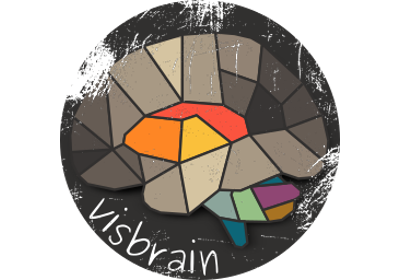visbrain.objects.PacmapObj¶
- class visbrain.objects.PacmapObj(name, data=None, sf=1.0, f_pha=[(2, 4), (5, 7), (8, 13)], f_amp=[(40, 60), (60, 100)], idpac=(4, 0, 0), n_window=None, cmap='viridis', clim=None, vmin=None, under='gray', vmax=None, over='red', interpolation='nearest', max_pts=-1, parent=None, transform=None, verbose=None, pac_kw={}, **kw)[source][source]¶
Create a Phase-Amplitude Coupling (PAC) object.
The PAC is computed using the tensorpac package.
The Pacmap can be used to visualize :
PAC, across time for a fixed phase and several amplitude frequencies
PAC, across time for a fixed amplitude and several phase frequencies
PAC is computed across time for several amplitudes and phase.
- Parameters:
- namestring | None
Name of the pacmap object.
- dataarray_like
Array of data of shape (N,)
- sffloat | 1.
The sampling frequency.
- f_phalist | [(2, 4), (5, 7), (8, 13)]
The phase vector.
- f_amplist | [(40, 60), (60, 100)]
The amplitude vector.
- idpactuple | (4, 0, 0)
The PAC method to use.
- n_windowint | None
Number of time points to consider when computing pac for a fixed phase or amplitude.
- climtuple | None
Colorbar limits. If None, clim=(data.min(), data.max())
- cmapstring | None
Colormap name.
- vminfloat | None
Minimum threshold of the colorbar.
- understring/tuple/array_like | None
Color for values under vmin.
- vmaxfloat | None
Maximum threshold of the colorbar.
- understring/tuple/array_like | None
Color for values over vmax.
- interpolationstring | ‘nearest’
Interpolation method for the image. See vispy.scene.visuals.Image for availables interpolation methods.
- max_ptsint | -1
Maximum number of points of the image along the x or y axis. This parameter is essentially used to solve OpenGL issues with very large images.
- transformVisPy.visuals.transforms | None
VisPy transformation to set to the parent node.
- parentVisPy.parent | None
Markers object parent.
- verbosestring
Verbosity level.
- kwdict | {}
Optional arguments are used to control the colorbar (See
ColorbarObj).
Notes
List of supported shortcuts :
s : save the figure
<delete> : reset camera
Examples
>>> import numpy as np >>> from visbrain.objects import SpectrogramObj >>> n, sf = 512, 256 # number of time-points and sampling frequency >>> time = np.arange(n) / sf # time vector >>> data = np.sin(2 * np.pi * 25. * time) + np.random.rand(n) >>> spec = SpectrogramObj('spec', data, sf) >>> spec.preview(axis=True)
Methods
__init__(name[, data, sf, f_pha, f_amp, ...])Init.
animate([step, interval, iterations])Animate the object.
copy()Get a copy of the object.
Tree description.
preview([bgcolor, axis, xyz, show, obj, ...])Previsualize the result.
record_animation(name[, n_pic, bgcolor])Record an animated object and save as a *.gif file.
render()Render the canvas.
screenshot(saveas[, print_size, dpi, unit, ...])Take a screeshot of the scene.
set_data(data[, sf, f_pha, f_amp, idpac, ...])Compute pacmap and set data to the ImageObj.
set_shortcuts_to_canvas(canvas)Set shortcuts to a VisbrainCanvas.
to_dict()Return a dictionary of all colorbar args.
to_kwargs([addisminmax])Return a dictionary for input arguments.
update()Fonction to run when an update is needed.
update_from_dict(kwargs)Update attributes from a dictionary.
